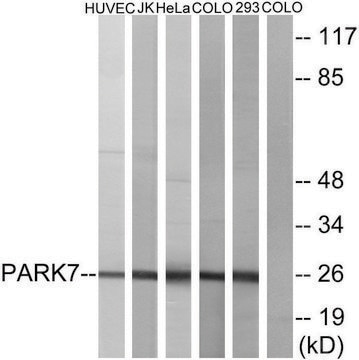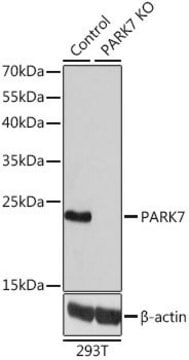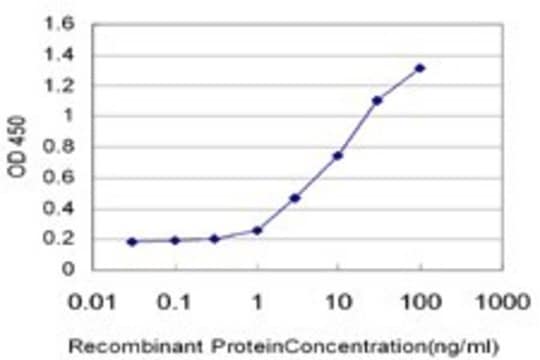MABN1773
Anti-oxDJ-1 Antibody (Cys106), clone M149
clone M149, from mouse
Sinónimos:
Protein DJ-1, Oncogene DJ1, Parkinson disease protein 7, oxDJ-1 (Cys106)
About This Item
Productos recomendados
biological source
mouse
Quality Level
antibody form
purified immunoglobulin
antibody product type
primary antibodies
clone
M149, monoclonal
species reactivity
mouse, human
technique(s)
immunohistochemistry: suitable
western blot: suitable
isotype
IgG2aκ
NCBI accession no.
UniProt accession no.
shipped in
wet ice
target post-translational modification
unmodified
Gene Information
human ... PARK7(11315)
General description
Specificity
Immunogen
Application
Western Blotting Analysis: A reporesentative lot detected basal DJ-1 oxidation (oxDJ-1) in human neuroblastoma SH-SY5Y cells and murine fibroblasts from wild-type, but not DJ-1 knockout, mice, as well as enhanced oxDJ-1 in H2O2-treated SH-SY5Y cells (Saito, Y., et al. (2014). J Neuropathol Exp Neurol. 73(7):714-728.).
Neuroscience
Developmental Signaling
Quality
Western Blotting Analysis: 0.1 µg/mL of this antibody detected enhanced DJ-1 oxidation in 10 µg cell lysate from H2O2-treated human neuroblastoma SH-SY5Y cells.
Target description
Physical form
Storage and Stability
Other Notes
Disclaimer
Not finding the right product?
Try our Herramienta de selección de productos.
Storage Class
12 - Non Combustible Liquids
wgk_germany
WGK 1
flash_point_f
Not applicable
flash_point_c
Not applicable
Certificados de análisis (COA)
Busque Certificados de análisis (COA) introduciendo el número de lote del producto. Los números de lote se encuentran en la etiqueta del producto después de las palabras «Lot» o «Batch»
¿Ya tiene este producto?
Encuentre la documentación para los productos que ha comprado recientemente en la Biblioteca de documentos.
Nuestro equipo de científicos tiene experiencia en todas las áreas de investigación: Ciencias de la vida, Ciencia de los materiales, Síntesis química, Cromatografía, Analítica y muchas otras.
Póngase en contacto con el Servicio técnico







